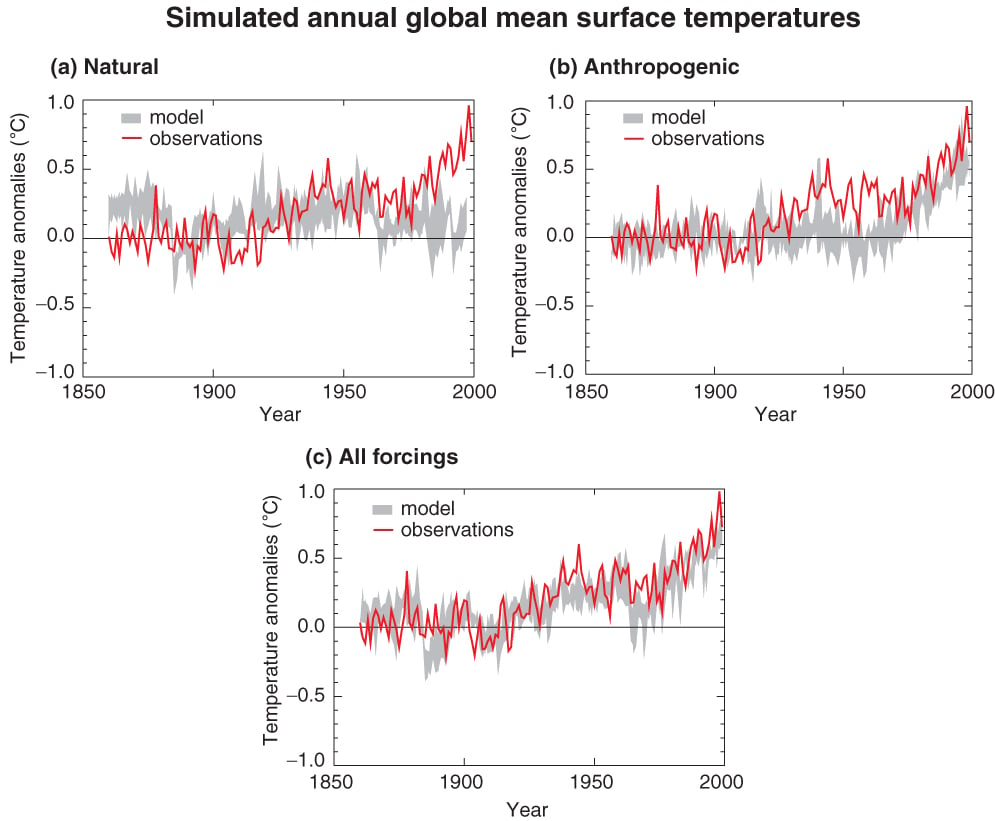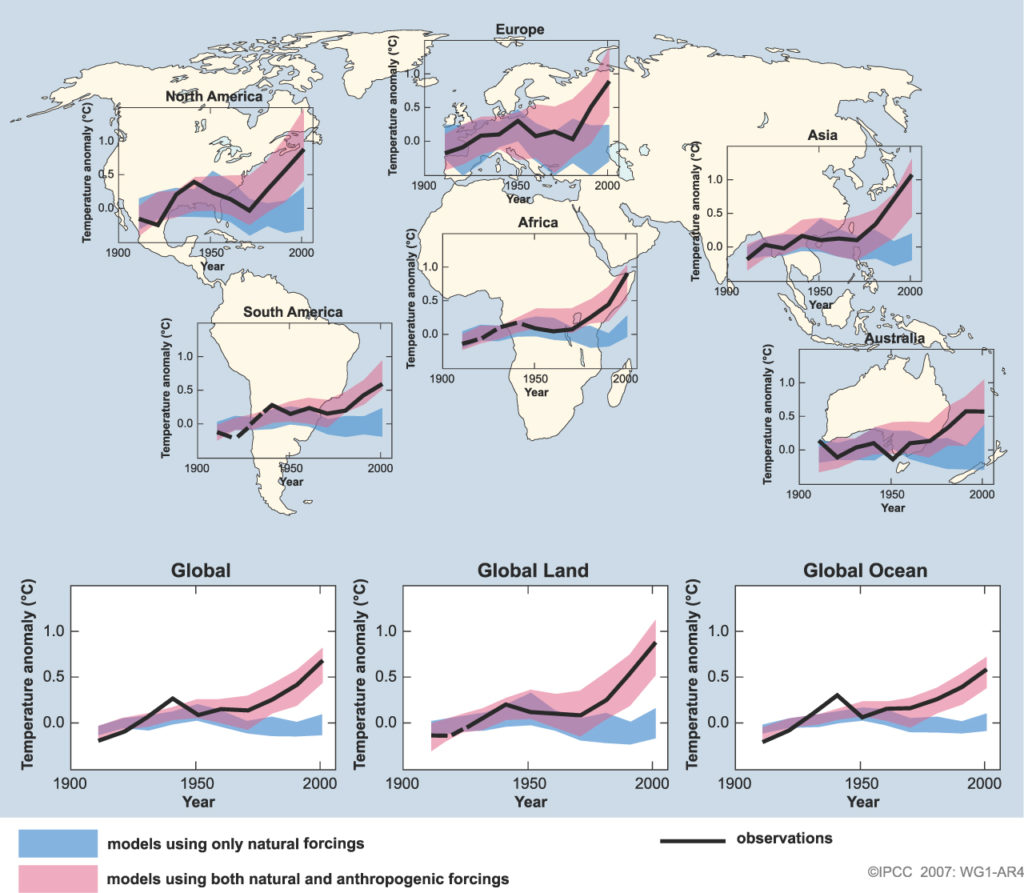Climate Change: The Fundamentals - Part II
Man or nature?
The Question
Previously, we saw that anthropogenic emissions are causing global warming and climate change. But how do we know they are the main cause of climate change? How do we know that modern climate change is indeed caused by mankind?
Scientists who study past climates on our planet have discovered large climatic variations in the Earth's past. For example, temperatures in several places were 5 - 12 oC higher than today, around 55 million years ago. If the Earth could show such large variations with no humans present on it, how can we be sure that the climate change we see today is caused by humans? After all, modern climate change has only caused a change of about 1 oC so far (on average). What if modern climate change is simply natural?
The Answer
Scientists can simulate the climate system using computer models. We can compare results from climate models with actual meteorological observations to see how well they match. The first figure shows three situations for the years 1860 - 2000.
[ Note: In climate parlance, a forcing is anything that affects the climate system. ]
[ Note: In climate parlance, a forcing is anything that affects the climate system. ]
Situation (a) simulates the climate but only using natural forcings. This estimates the role of the natural variability of the climate system. As is evident, the grey region (model) and the red line (observations) do match sometimes, but not very well.
Situation (b) estimates only anthropogenic variability. This time, the grey and the red seem to match more than situation (a). The model results seem to be coming more in tune with the observations.
Situation (c) shows what happens when the model accounts for both the natural and the anthropogenic forcings. This is obviously the most realistic of the three situations. It also shows the best match between observations and model results.
If climate change was dominantly the result of natural causes, situation (a) would have shown the best match. Instead, situation (b) shows a better match than situation (a). We see that natural causes alone cannot explain modern climate change. This is how we know that anthropogenic forcings play a vital role in changing the climate.
 |
| Source: IPCC Third Assessment Report (2001) |
This figure was published in the year 2001 but the results still hold. In fact, the next IPCC report published in 2007 examined this even more rigorously. The following figure shows the same comparison between climate models and observations. The blue regions show model results when only natural forcings are taken into account. The pink regions show model results when both natural and anthropogenic forcings are included. We see the same result as we saw before. In every single region examined, the observations cannot be explained by natural forcings alone. The difference lies in the man-made forcings. This result also holds when we look at the whole world, or the land and the oceans separately.
 |
| Source: IPCC Fourth Assessment Report (2007) |
Thus, mankind is indeed the reason behind modern climate change.
When we remember that the observed global warming is in the order of 1 oC so far, and that natural causes can cause much more warming, we realise that the question "Man or nature?" was a tricky one. The Earth has indeed gone through larger temperature fluctuations in the past, but what we see today is the result of our own actions. This is important to understand to decide what steps need to be taken to solve this problem.
When we remember that the observed global warming is in the order of 1 oC so far, and that natural causes can cause much more warming, we realise that the question "Man or nature?" was a tricky one. The Earth has indeed gone through larger temperature fluctuations in the past, but what we see today is the result of our own actions. This is important to understand to decide what steps need to be taken to solve this problem.
-----
Points to ponder:
- The IPCC reports are published only after they have been approved by all the governments involved. This means that the Third Assessment Report - published in 2001, 18 years ago (!) - informed all governments that the crisis was not natural but was our fault. Why have governments not taken drastic steps to reduce emissions?
- In your opinion, have the governments in your country taken satisfactory measures for solving this crisis?
-----
P. S. Excellent rendition here - "What's Really Warming The World?" Much recommended.
Also, this is not the only way to reach the same answer. Other ways will be discussed in other posts.
-----
P. S. Excellent rendition here - "What's Really Warming The World?" Much recommended.
Also, this is not the only way to reach the same answer. Other ways will be discussed in other posts.
-----
For email subscription:


Comments
Post a Comment